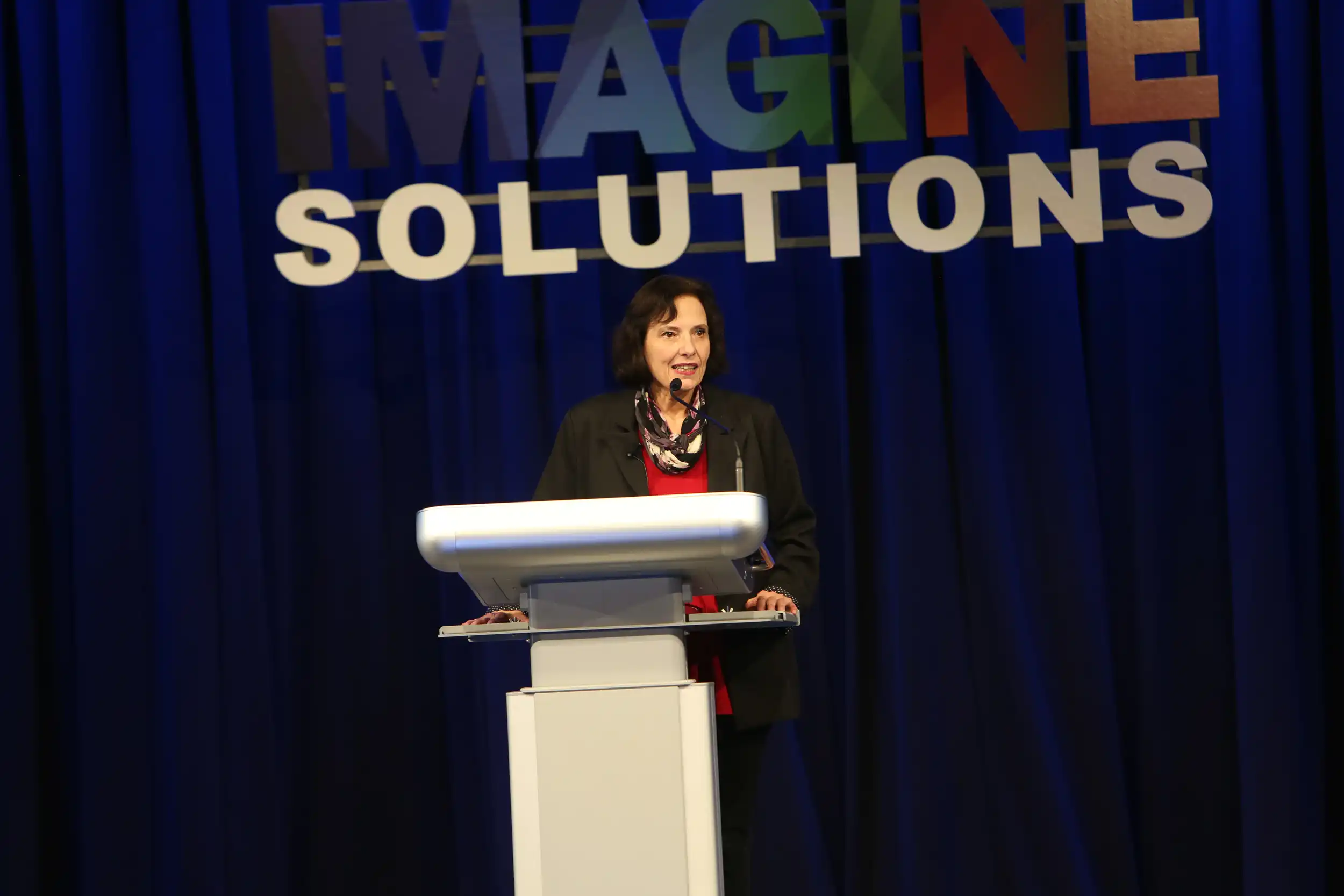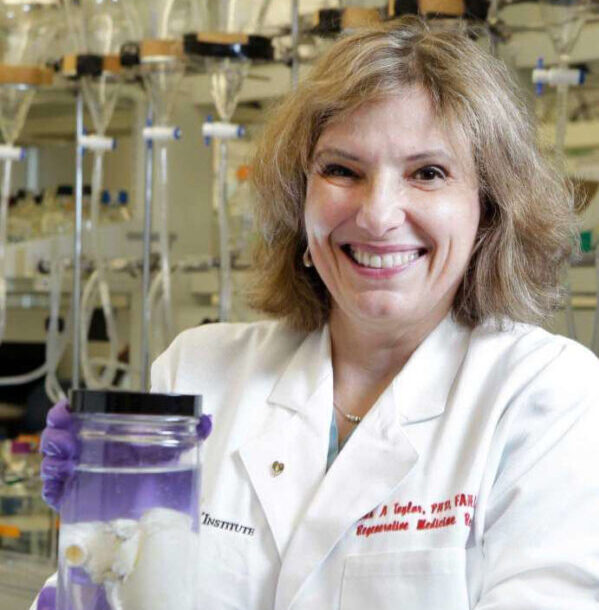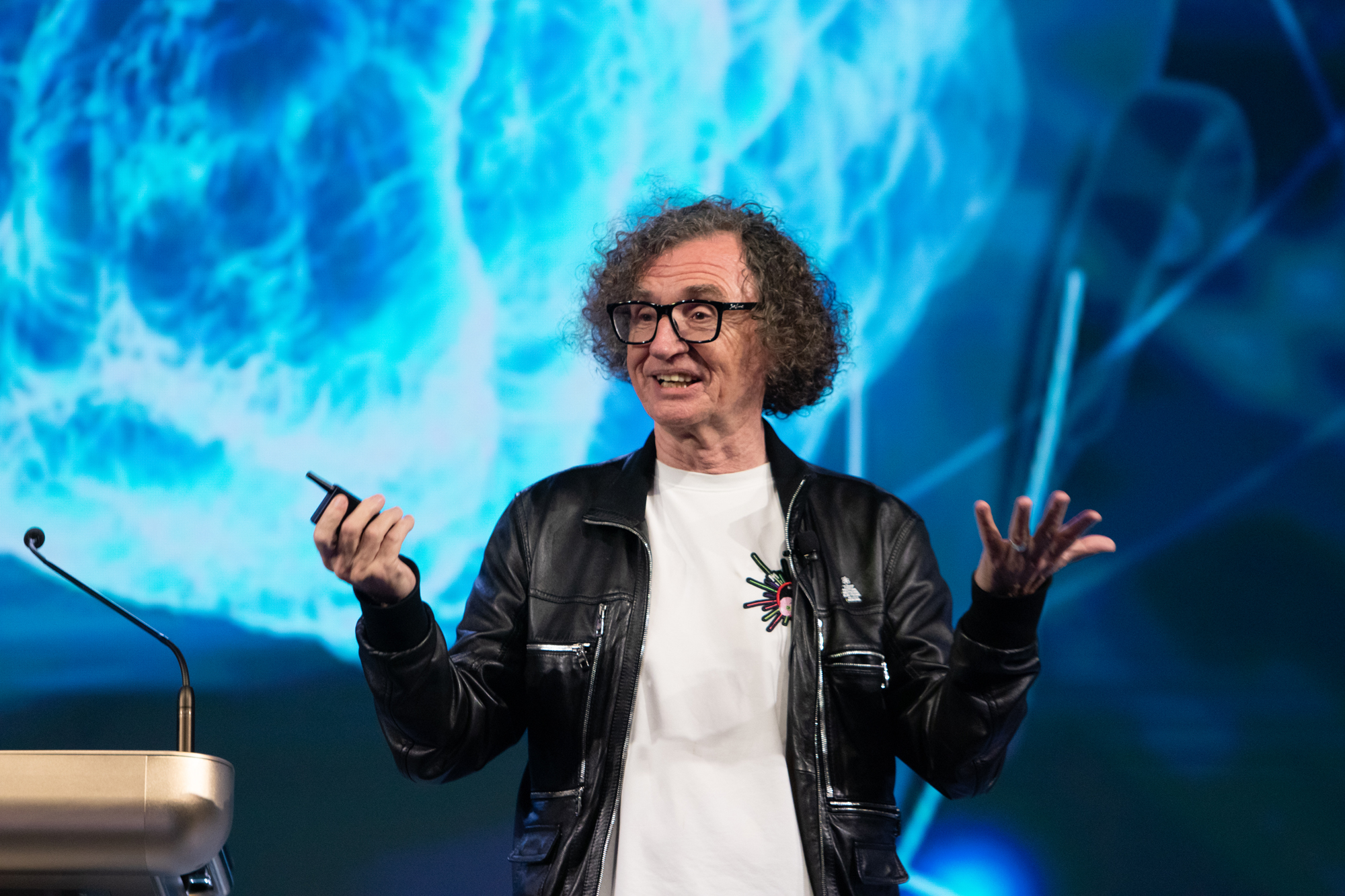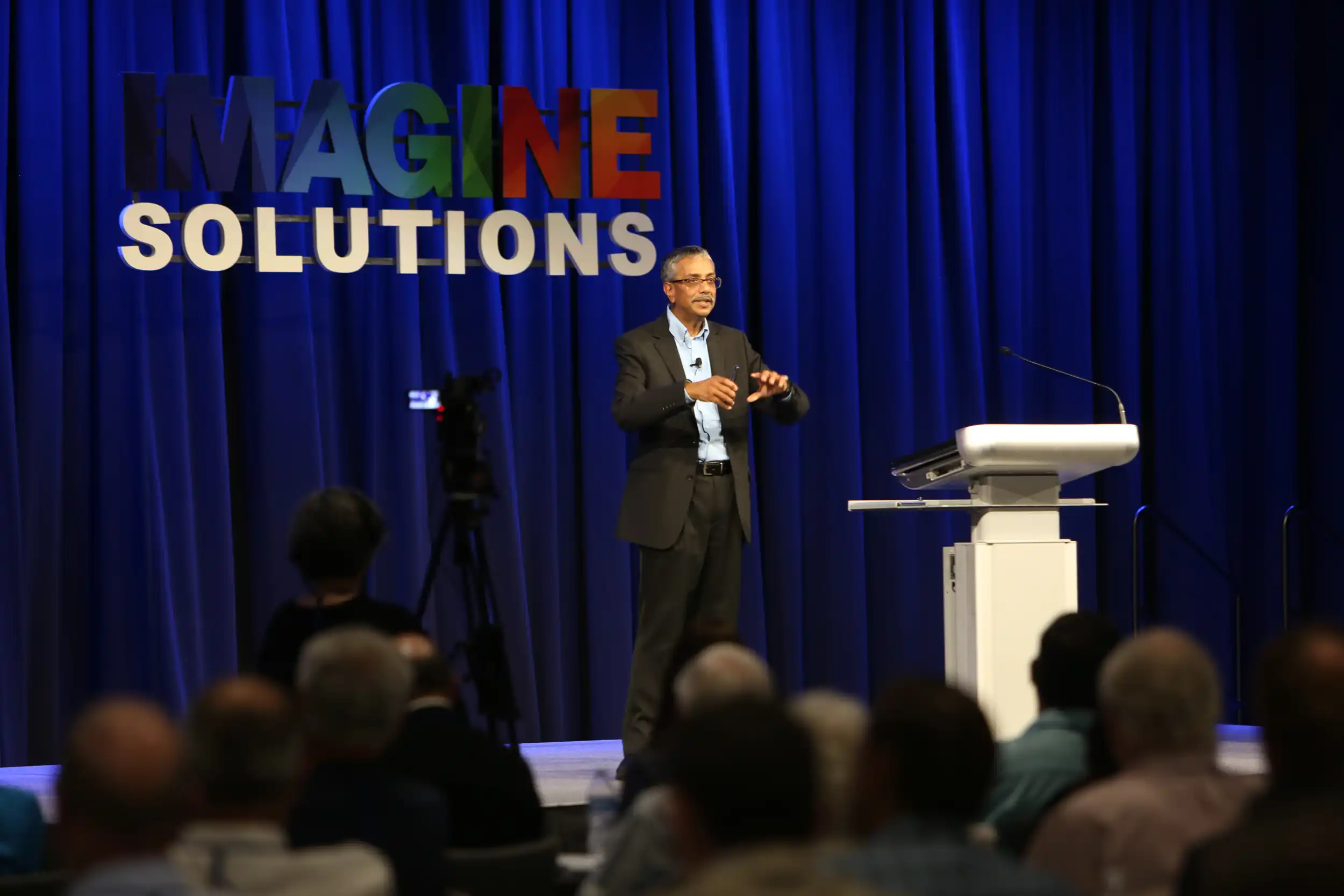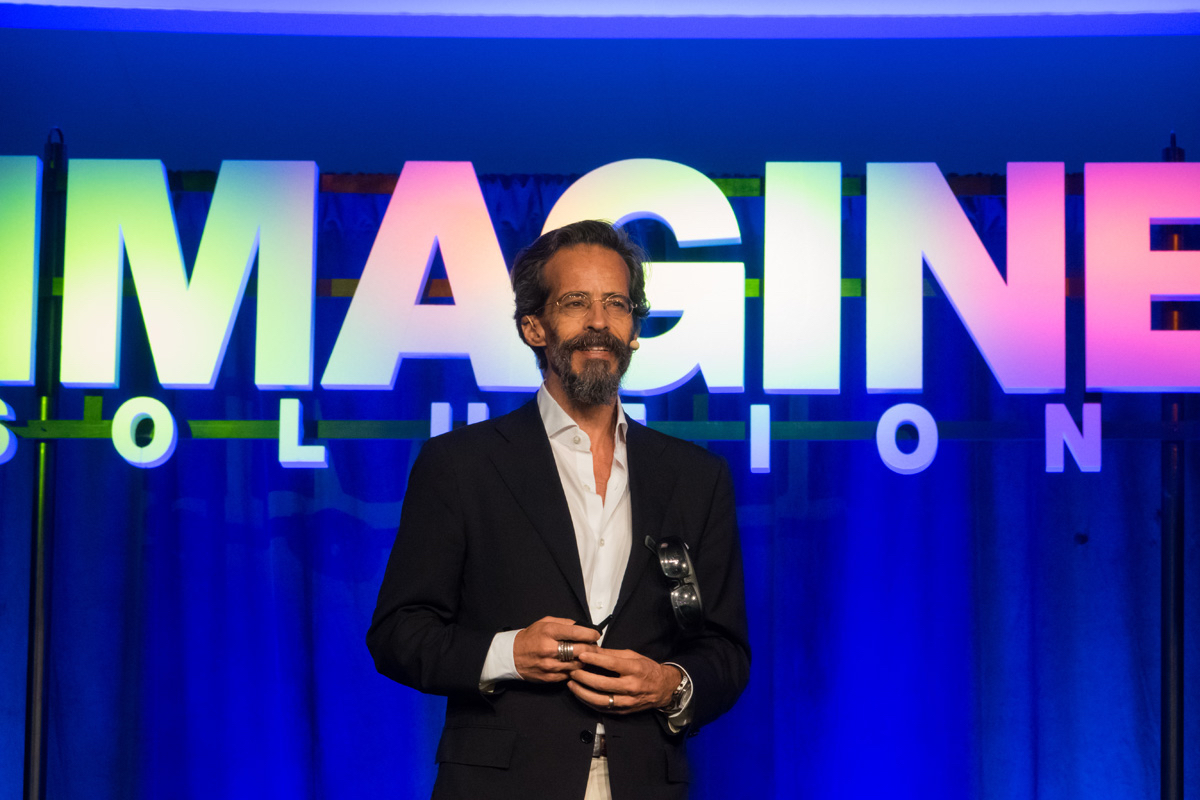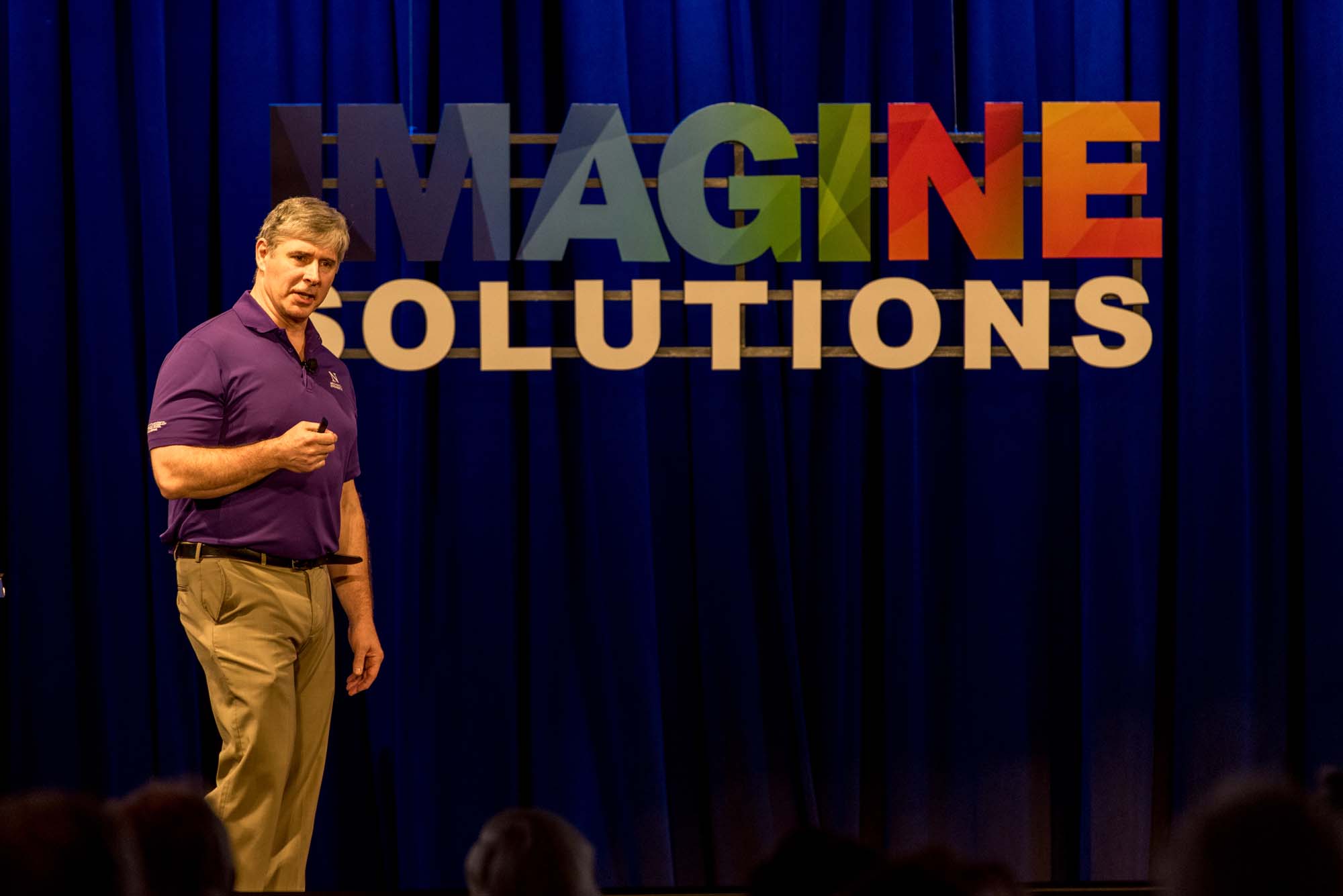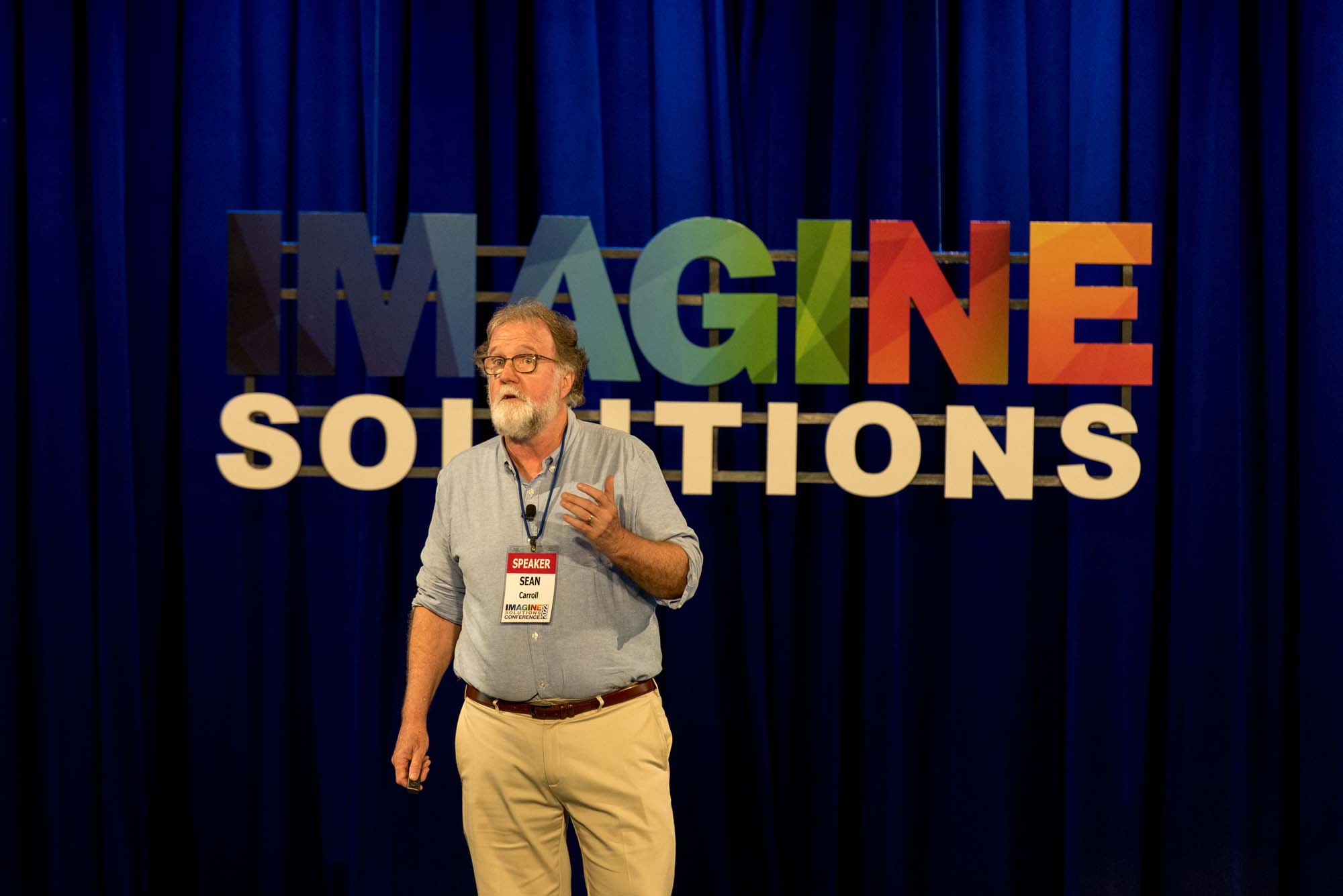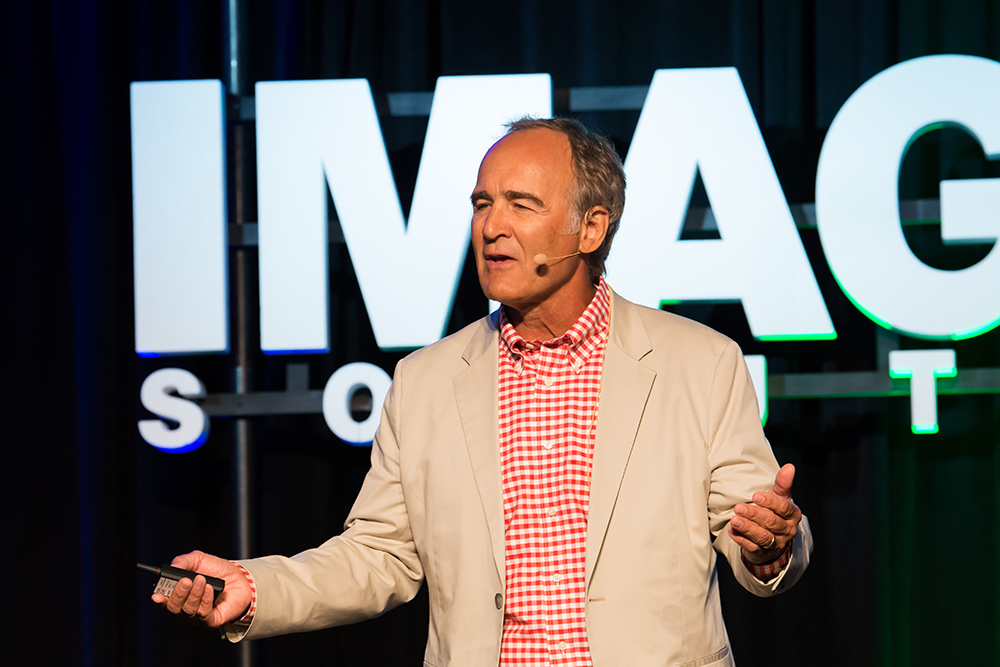Growing Personalized, On – Demand, Replacement Human Hearts
00.00
foreign [Music] hi there well I have some good news and bad news so the bad news the good news is I'm here to tell you about curing the number one disease affecting Humanity heart disease the bad news is 259 of you in this room have heart disease look to your left or your right and if there's a person there one of the two of you has heart disease
01.02
if it's not you it's them 48 percent of the population in the U.S has heart disease and one-third of all people in the world die from heart disease it's a number one killer worldwide of men women and children let me ask you a question how many of you know a woman who's had breast cancer raise your hand a lot of you how many of you know a woman who's had heart disease not as many hands and yet five times more women have heart disease and breast cancer but we don't talk about that why don't we talk about that I think in part we don't talk about that because we
02.01
blame people for their heart disease we say oh if you ate right if you exercise if you did all the right things and didn't have didn't drink whatever you wouldn't get heart disease and you know what lifestyle certainly plays a role but that's not all of it and heart disease doesn't have a face like cancer does but the reality is to your right or your left if it's not you it's them heart disease is everywhere in the U.S and rather than preventing it we talk a lot about trying to intervene and treat it and we're not doing a great job because every 34 seconds 34 seconds someone has a heart attack
03.01
during this session this morning 105 people have had a heart attack in the world ten percent of those die within an hour but the rest go on to have Progressive problems that culminate in what we call heart failure where your heart can't pump enough blood to your body and the only definitive cure for heart failure is a heart transplant And Then There are kids one percent of U.S births are kids with complex congenital heart disease do we blame them oh gee you need a heart transplant what you were born we need to solve this problem
04.01
because right now today if you need a heart transplant someone has to die before you're going to get one and my goal is to change that the truth is because someone has to die for you to get a heart transplant we only do on average 10 heart transplants a day in the U.S and there are 2 700 people waiting for a heart any given day .04 percent and what that means is those 2 700 people have made it onto the waiting list for a heart but typically you have to be very sick to get on that list if you're not sick enough you don't make the list if you're too sick you don't make the list if you're too young you don't make the list if you're too old you don't make the list and if you cannot afford to pay for the treatment you don't make
05.02
the list what that means is that the list of 2 700 people is much smaller than the number of people who actually need hearts and that's been the status quo for 55 years and if you're lucky enough to be one of the people who gets a heart what that means is that every day for the rest of your life you take drugs to keep from rejecting that heart every day you take drugs and those drugs can cost up to thirty thousand dollars a month and they make you sick they give you high blood pressure they give you diabetes they can cause renal failure there are people who've had Hearts who have to get a kidney transplant because the drugs they took to keep them from losing their heart made them lose their kidneys
06.02
we have to change the status quo and I'm committed to doing that so my goal is to build personalized on-demand replacement human hearts build a personalized human heart not a pig heart you heard recently about someone receiving a pig heart as a transplant and that was a big breakthrough for a lot of reasons but that person received a pig card not a human heart and that person died several months later for two reasons one they had to be massively immunosuppressed because even though they had received it a quote Gene edited heart it was still Pig and that pig heart had a virus from the pigness of it all and that individual couldn't fight the
07.00
virus because they had been so massively immunosuppressed my goal is to personalize human hearts which will reduce your risk it'll reduce the lifetime cost of transplants today a heart transplant costs on the order of 2.3 million dollars over the lifetime of an individual we believe we can reduce that by about 49 percent it improves your quality of life because if I give you a heart that matches you then then it's like day one all over again you got a heart you're not taking drugs every day and for the first time we have the potential to cure the number one killer on the planet and beyond that if we can manufacture them we can make them available before you're so sick today 18 of people who receive a heart transplant die in the first year because
08.00
they were either so sick when they got their heart that they succumbed to all the other consequences or the immunorejaction immunosuppression was a problem by five years by ten years out 59 percent die we can change that and I'm here to tell you that building Hearts is no longer a pipe dream people say it's a moonshot I'm like no it's I think of it more like getting Percy to Mars you know it it really was audacious times 10 but guess what Percy's on Mars and if we had one tenth of one percent of the resources that it took to build the rocket only to get Percy to Mars we'd already be doing this in people today but this is a journey that started a while ago and in 2005 when I had been
09.01
doing cell therapy and heart for a while I was like let's build a heart how hard can it be and then I was like what do we need to build a heart well we need heart cells and I don't know if you can see it but these cells are beating in a dish and the first time you see heart cells actually beating in a dish it changed my life I was like wow that's alive and I'm dealing with something alive here but you don't heart cells in a dish are on the heart you need a place to put those a framework if you will and because my Mantra is give nature the tools and get out of the way I said what if we take a heart and use the framework of that to build the heart so what we did is we took a heart and we developed a baby shampoo basically that would let us wash
10.02
all the cells out of that heart so we could wash all the cells out and what was left is what we called our ghost heart the media dubbed it a ghost heart it's a translucent scaffold like a 2x4 of a house into which I said okay now let's put heart cells and see if we can build a heart and within a year we had created a beating heart in a lab it was pretty cool so we had taken something that was dead added cells back and made it alive but and I want to I want to make this point it might have been too much because our scientific colleagues pushed back hard and it took us over two years to get the paper published now since it was published it's been deemed one of the breakthroughs in science but it took us
11.01
two years to get it published and we had someone say oh that's not novel and we had someone else who was reviewing it say that's impossible how do you reconcile those to make an editor happy and there's there's scientific media here we should talk once it hit the world loved it it really made a lot made a lot of sense to a lot of people so I was like okay that it took us until 2008 to get it published I was like that wasn't too bad got published on my mom's birthday in 2008 so it was a good day but let's be honest we basically built a rat heart it was a tiny tiny tiny heart and David Letterman's joke about politicians aside we weren't going to do anything with the rap heart so I said okay let's build a human heart
12.00
how hard can it be well let me tell you about the human heart the first thing I want to tell you is your heart's about the size of your fist and your heart weighs anywhere from 25 grams in a in a small child to about 350 grams in an adult or if you're a big adult maybe 400 or have heart failure maybe 450 grams why is that important because to build a heart we need one billion cells for every gram of tissue one billion so we had to figure out how to grow 350 billion cells and oh by the way heart cells don't divide so we couldn't just take some heart cells and grow some more we had to back up and say how can we do this and we had
13.01
to get it right because if we're going to build a human heart it has to be 60 to 80 beats per minute every minute you don't want me to build your heart that beats most minutes and takes a minute off every once in a while you know and people have said well can't you do it cheaper I'm like yeah I can but do you really want that hard I'll give it to you if that's what you want but I don't think you do so the other thing is the heart is an amazing organ over our lifetime it creates enough energy to power a Mac Truck to the Moon and back we have to build something that could do that and it pumps 1.5 million barrels of blood over the course of your lifetime and to do that it has to have a blood supply that is amazing and in fact the
14.00
heart has and this is one of our ghost Hearts getting hooked up to getting transplanted it has to have 60 000 miles of blood vessels and we had to rebuild those so no challenge how hard could it be well fast forward 12 years where we had to create a way to take stem cells from a person from your bone marrow or your blood or your skin and grow those billions of cells and that took me 12 years of my life but then we also had to figure out every single piece of how to build this heart how do we put the two together where do we do it how do we feed it what do we feed it you don't normally find Hearts growing in the wild you know um so we had to figure it out fast forward 12 years
15.01
and we were able to go from a three gram heart to an eight gram heart now all over again I just want to point out we had this rejected in multiple medical journals because again it pushed the status quo well that's not really a hard okay it pumps blood it looks like a heart it acts like a heart what do you want oh well you didn't use this antibody so we don't believe it it was crazy and I I do want to talk about at some point so ask me during the break the pushback that people get when they try to innovate but I said okay it took us 14 years to go from two grams three grams to eight grams we basically doubled the size of the heart so if that or tripled the size of the heart if that's the rate at which we can do this it's going to take 42 years to
16.01
build the heart large enough to help a young girl a teenage girl and every day there are hundreds of people dying waiting for a heart not acceptable we have to change this so I got smarter we got smarter and I started the company and I said screw publishing necessarily for the sake of science let's get this to patience now that doesn't mean I don't do science I do science or love ideas I continue to do ideas I've already spoken with multiple of those earlier speakers backstage about new ideas and it makes me very happy but my goal is to cure heart disease in my lifetime so I said let's start a company organomat Oregon Amat organ environment and Latin for those of you who care that's going to build on-demand personalized hearts and then I went in
17.03
search of Partners and I found a Department of Defense partner Army biofab USA a Department of Defense funded initiative that introduced me to strategic Partners who were members of army and by doing that I was able to take the things we had done by hand teach them how to do them and we automated them oh yeah the part I forgot to say is we got to the point that we could do it over and over and over we did it hundreds of times building these and every time we failed we failed because it got contaminated because we're doing this without antibiotics in a laboratory setting by hand and we had to build all the tools to do it and somebody had a bad day and
18.01
sneezed it was over so we would do this and we would pray for two days every time we did one of these that two days later was still going to be sterile so we had to figure out how to get people out of it so we found strategic Partners who would help us automate this so we were able to go from doing it by hand to showing them how to use a machine and automating growing cells and then creating that ghost heart you can see literally our Rube Goldberg homemade apparatus in the middle there that we used until we found Partners who could help us automate it and then we made one that looks much more Spacey I love it it's more like what you would see on Proteus than than you know and then rather than injecting by hand my new best friend is Bab the robot the bio
19.01
assembly bot that I taught how to inject cells and by doing that we were able to create this automated assembly line that let us go in less than one year to a 50 gram human heart that's beating in the lab and we've begun to transplant those now in animals with the goal of doing this in people that's a human heart built by by us and a robot and the first time you see that it kind of makes you cry it's very humbling and I had intended to have hearts here today to show you and I have to thank Ronnie and Randy and dab and everyone who tried to make that possible and the storms across the Northeast shut down the airport and the hearts were stuck on the tarmac
20.02
imagine how that feels if you're someone waiting for one for transplant so how do we do this going forward I'm almost out of time the way we do it is it 48 percent of you have heart disease you know a third of people in the world die from heart disease you know someone in your family has heart disease your mom died from it your dad died from it let us Bank yourselves now and grow those billions of cells today because a rate limiting step in this is the 12 to 14 weeks that it takes to grow those cells and then we store your cells we have our on-the-shelf scaffold we grab it off the shelf and six months in advance when you and your surgeon or cardiologist say Jim's going to need a heart we start building you a heart
21.02
so where are we with this well you know I just want to make a point for the younger folks in the lab we've had to persist and given the right opportunities we're going to be doing this in people in five years we have a plan given the right resources to be in first and human in five years [Applause] but the other thing I want to say is even though it's been hard we spend more time at work than we do at home so you have to have fun and Stephen Hawking heard about what we were doing and that we were building hearts for with stem cells and he asked us to do a flash mob for him now as a scientist I shouldn't admit this I didn't know what a flash mob was but but we did I learned and if you have fun then you can do amazing
22.01
things and rather than thinking about intervening or treating I believe we can cure heart disease and we can build a personalized Innovative cure and this picture here on the bottom right is a little girl Katarina who is going to need one of our hearts and her mom has created a foundation called buildingthecure.org to support what we do I encourage you to look at our website but go look at that Foundation and help Katarina and other kids with complex congenital heart disease finally I just get to stand up here and talk but it's really about bab and the team that make this real I'm just the person with the big mouth they're the ones they're doing it every day so thank you very much and come talk to me
23.02
[Music] thank you

